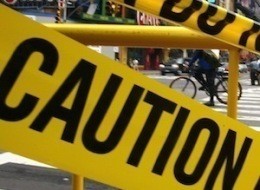
I was very excited when Google finally released a Bike There feature on Google Maps, where a cyclists could pick the best route for pedaling from place to place. Now there is a new free iPhone app that turns your iPhone into a cyclist's version of a TomTom or Garmin GPS navigator. The app shows the best bike-friendly routes to get from here to there, and displays a map for you to check during your journey. It not only keeps you on bike paths, but also shows you short-cuts that can trim time off your ride. And it has a whole bunch of other handy features that are cool.
According to the press release, the app from Bike Hub suses satnav-style routing that has been engineered specifically for cyclists. It keeps you on bike-safe paths and streets, and arranges your route to minimize up-hill cycling. You can even pick if you want the quietest route, the quickest, or a balanced route.
The cycle routing is done via CycleStreets of Cambridge, a community-based group working on a not-for-profit basis. Cyclestreets uses mathematical graph theory algorithms to quickly work out bicycle-friendly routes. Mapping is provided by OpenStreetMap, the 'wikipedia of maps'. OpenStreetMap is a community of 300,000 map enthusiasts worldwide who collaborate to produce the most up-to-date maps available. Changes made by members of the OSM community can be available online within hours.Other features we like include a "bike shop finder," a listing of bike-friendly events, and a listing of laws associated with cycling in that area.

There seems to be some room for improvement according to a review on the Guardian:
One that will be particularly noticeable for anyone who has used satnav before, is that the app's map doesn't have a little dot tracking your progress. Also, the map doesn't scroll automatically as you move, or call turnings. If you want to know where you are, you need to click the target icon. You'll get a lovely big purple doughnut on the screen to show where you are, but it doesn't hang around long. Similarly it won't tell you how fast you're going. Overall, if you're expecting satnav for your bike, you'll be disappointed. To their credit, the makers actually call it "the nearest thing to satnav for bikes". It would have been nice though ...Even with these issues, the reviewer gave it a very high recommendation. If you try it out, let me know what you think!
Another problem - one that goes for all bike apps on iPhones - is that battery life isn't good for longer trips, especially if you want to keep the screen switched on.










